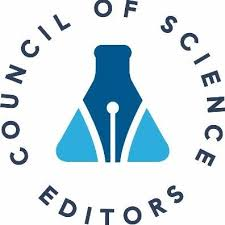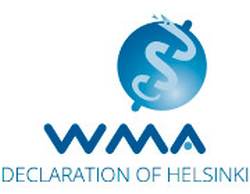Biol Sport. 2026;43:21–33
1. Verkhoshansky Y, Siff, MC. Supertraining 6th ed. Rome: Verkhoshansky: 2009.
2.
Martel GF, Harmer ML, Logan JM, Parker CB. Aquatic plyometric training increases vertical jump in female volleyball players. Med Sci Sports Exerc. 2005; 37(10):1814–1819.
3.
Krističević T, Krakan I, Baić M. Effects of short high impact plyometric training on jumping performance in female volleyball players. Acta Kinesiol. 2016; 10(1):25–29.
4.
Mackala K, Fostiak M, Schweyen B, Osik T, Coch M. Acute effects of a speed training program on sprinting step kinematics and performance. Int J Environ Res Public Health. 2019; 16(17):3138–3151.
5.
Ramirez-Campillo R, Andrade DC, Nikolaidis PT, Moran J, Clemente FM, Chaabene H, Comfort P. Effects of plyometric jump training on vertical jump height of volleyball players: a systematic review with meta-analysis of randomized controlled trial. J Sport Sci Med. 2020; 19(3):489–499.
6.
Haugen T, Buchheit M. Sprint running performance monitoring: methodological and practical considerations. Sports Med. 2016; 46(5):641–656.
7.
Fernandez-Santos JR, Ruiz JR, Cohen DD, Gonzalez-Montesinos JL, Castro-Piñero J. Reliability and validity of tests to assess lower-body muscular power in children. J Strength Cond Res. 2015; 29(8):2277–2285.
8.
Rusu LD, Cosma GG, Cernaianu SM, Marin MN, Rusu PA, Ciocănescu DP, Neferu FN. Tensiomyography method used for neuromuscular assessment of muscle training. J Neuroeng Rehabil. 2013; 10(1):1–8.
9.
de Paula Simola RÁ, Harms N, Raeder C, Kellmann M, Meyer T, Pfeiffer M, Ferrauti A. Assessment of neuromuscular function after different strength training protocols using tensiomyography. J Strength Cond Res. 2015; 29(5):1339–1348.
10.
Núñez FJ, Santalla A, Carrasquila I, Asian JA, Reina JI, Suarez-Arrones LJ. The effects of unilateral and bilateral eccentric overload training on hypertrophy, muscle power and COD performance, and its determinants, in team sport players. PloS One. 2018; 13(3):e0193841.
11.
Zubac D, Šimunic B. Skeletal muscle contraction time and tone decrease after 8 weeks of plyometric training. J Strength Cond Res. 2017; 31(6):1610–1619.
12.
Zubac D, Paravlić A, Koren K, Felicita U, Šimunič B. Plyometric exercise improves jumping performance and skeletal muscle contractile properties in seniors. J Musculoskelet Neuronal Interact. 2019; 19(1):38–49.
13.
Pereira LA, Ramirez-Campillo R, Martín-Rodríguez S, Kobal R, Abad CC, Arruda AF, Loturco I. Is tensiomyography-derived velocity of contraction a sensitive marker to detect acute performance changes in elite team-sport athletes? Int J Sports Physiol Perform. 2020; 15(1):31–37.
14.
Šimunič B, Degens H, Rittweger J, Narici M, Mekjavic I, Pisot R. Noninvasive estimation of myosin heavy chain composition in human skeletal muscle. Med Sci Sports Exerc. 2011; 43(9):1619–1625.
15.
Pišot R, Narici MV, Šimunič B, De Boer M, Seynnes O, Jurdana M, Mekjavić IB. Whole muscle contractile parameters and thickness loss during 35-day bed rest. Eur J Appl Physiol. 2008; 104(2):409–414.
16.
Šimunič B, Koren K, Rittweger J, Lazzer S, Reggiani C, Rejc E, Pišot R, Narici M, Degens H. Tensiomyography detects early hallmarks of bed-rest-induced atrophy before changes in muscle architecture. J Appl Physiol. 2019; 126(4):815–822.
17.
Hoffrén-Mikkola M, Ishikawa M, Rantalainen T, Avela J, Komi PV. Neuromuscular mechanics and hopping training in elderly. Eur J Appl Physiol. 2015; 115(5):863–877.
18.
Taube W, Leukel C, Gollhofer A. How neurons make us jump: the neural control of stretch-shortening cycle movements. Excer Sport Sci Rev. 2012; 40(2):106–115.
19.
Häkkinen K. Research overview: Factors influencing trainability of muscular strength during short term and prolonged training. Strength Cond J. 1985; 7(2):32–37.
20.
de Villarreal ESS, Kellis E, Kraemer WJ, Izquierdo M. Determining variables of plyometric training for improving vertical jump height performance: a meta analysis. J Strength Cond Res. 2009; 23(2):495–506.
21.
Arazi H, Asadi A. The effect of aquatic and land plyometric training on strength, sprint, and balance in young basketball players. J Hum Sport Exerc. 2011; 6(1):101–111.
22.
Arede J, Vaz R, Franceschi A, Gonzalo-Skok O, Leite N. Effects of a combined strength and conditioning training program on physical abilities in adolescent male basketball players. J Sports Med Phys Fitness. 2018; 59(8):1298–1305.
23.
Dursenev LI, Raevsky LG. Strength training of jumpers. Track Field Q Rev. 1982; 4:53–5.
24.
DeVita P, Skelly WA. Effect of landing stiffness on joint kinetics and energetics in the lower extremity. Med Sci Sports Exerc. 1992; 24(1):108–115.
25.
McNitt-Gray JL. Kinetics of the lower extremities during drop landings from three heights. J Biomech. 1993; 26(9):1037–1046.
26.
Hortobagyi T, Hill JP, Houmard JA, Fraser DD, Lambert NJ, Israel RG. Adaptive responses to muscle lengthening and shortening in humans. J Appl Physiol. 1996; 80(3):765–772.
27.
Komi PV. Physiological and biomechanical correlates of muscle function: effects of muscle structure and stretch—shortening cycle on force and speed. Exerc Sport Sci Rev. 1984; 12(1):81–122.
28.
Zatsiorsky V. Biomechanics in Sport: Performance Enhancement and Injury Prevention. Oxford, UK: Blackwell Science; 2008.
29.
World Medical Association. World Medical Association Declaration of Helsinki: ethical principles for medical research involving human subjects. JAMA. 2013 Nov 27; 310(20):2191–4.
30.
Marfell-Jones M, Olds T, Stewart A, Carter L. International standards for anthropometric assessment: ISAK Accreditation Handbook. Potchefstroom: International Society for the Advancement of Kinanthropometry (ISAK); 2016.
31.
Dumitru D, Zwarts M, Amato A. Special Nerve Conduction Techniques. In: Dumitru D, Zwarts M, editors. Electrodiagnostic Medicine. 2nd ed. Philadelphia: Hanley & Belfus, Inc; 2002. p. 225–256.
32.
Macgregor LJ, Hunter AM, Orizio C, Fairweather MM, Ditroilo M. Assessment of skeletal muscle contractile properties by radial displacement: the case for tensiomyography. Sports Med. 2018; 48:1607–1620.
33.
Martín-Rodríguez S, Loturco I, Hunter AM, Rodríguez-Ruiz D, Munguia-Izquierdo D. Reliability and measurement error of tensiomyography to assess mechanical muscle function: A systematic review. J Strength Cond Res. 2017; 31(12):3524–3536.
34.
Hopkins W, Marshall S, Batterham A, Hanin J. Progressive statistics for studies in sports medicine and exercise science. Med Sci Sports Exerc. 2009; 41(1):3–12.
35.
Vickers AJ, Altman DG. Analysing controlled trials with baseline and follow up measurements. BMJ. 2001; 323(7321):1123–1124.
36.
Idrizovic K, Gjinovci B, Sekulic D, Uljevic O, João PV, Spasic M, Sattler T. The effects of 3-month skill-based and plyometric conditioning on fitness parameters in junior female volleyball players. Pediatr Exerc Sci. 2018; 30(3):353–363.
37.
El-Ashker S, Hassan A, Taiar R, Tilp M. Long jump training emphasizing plyometric exercises is more effective than traditional long jump training: A randomized controlled trial. J Hum Sport Exer. 2019; 14(1):215–224.
38.
Fatouros IG, Jamurtas AZ, Leontsini D, Taxildaris K, Aggelousis N, Kostopoulos N, Buckenmeyer P. Evaluation of plyometric exercise training, weight training, and their combination on vertical jumping performance and leg strength. J Strenght Cond Res. 2000; 14(4):470–476.
39.
Enoka RM. Eccentric contractions require unique activation strategies by the nervous system. J App Physiol. 1996; 81(6):2339–2346.
40.
Chelly MS, Hermassi S, Shephard RJ. Effects of in-season short-term plyometric training program on sprint and jump performance of young male track athletes. J Strength Cond Res. 2015; 29(8):2128–2136.
41.
Siff M. Biomechanical foundations of strength and power training. In: Zatsiorsky V, editor. Biomechanics in Sport: Performance Enhancement and Injury Prevention. Oxford, UK: Blackwell Science; 2001. p. 103–139.
42.
Marković, G and Mikulić, P. Neuro-musculoskeletal and performance adaptations to lower-extremity plyometric training. Sports Med. 2010; 40(10):859–895.
43.
Prvulović N, Žuža Praštalo M, Lilić A, Pantelić S, Katanić B, Čoh M, Vučić V. TMG Symmetry and Kinematic Analysis of the Impact of Different Plyometric Programs on Female Athletes’ Lower-Body Muscles. Symmetry. 2024; 16(10):1393.
44.
Pišot R, Marusic U, Biolo G, Mazzucco S, Lazzer S, Grassi B, Reggiani C, Šimunič B. Greater loss in muscle mass and function but smaller metabolic alterations in older compared with younger men following 2 wk of bed rest and recovery. J Appl Physiol. 2016; 120(8):922–929.
45.
Andersen, J. L. (2003). Muscle fibre type adaptation in the elderly human muscle. Scand J Med Sci Sports, 2003; 13(1):40–47.
46.
Higbie EJ, Cureton KJ, Warren III GL, Prior BM. Effects of concentric and eccentric training on muscle strength, cross-sectional area, and neural activation. J Appl Physiol. 1996; 81(5):2173–2181.
47.
Kumagai K, Abe T, Brechue WF, Ryushi T, Takano S, Mizuno M. Sprint performance is related to muscle fascicle length in male 100-m sprinters. J Appl Physiol. 2000; 88(3):811–816.
48.
Bettariga F, Turner A, Maloney S, Maestroni L, Jarvis P, Bishop C. The effects of training interventions on interlimb asymmetries: a systematic review with meta-analysis. Strength Cond J. 2022; 44(5):69–86.
49.
Hewit J, Cronin J, Hume P. Multidirectional leg asymmetry assessment in sport. Strength Cond J. 2012; 34(1):82–86.
50.
Azimovna FM. The quality assessment technology and development techniques in volleyball players. WOS. 2021; 2(4):242–248.
Copyright: Institute of Sport. This is an Open Access article distributed under the terms of the Creative Commons CC BY License (https://creativecommons.org/licenses/by/4.0/). This license enables reusers to distribute, remix, adapt, and build upon the material in any medium or format, so long as attribution is given to the creator. The license allows for commercial use.








